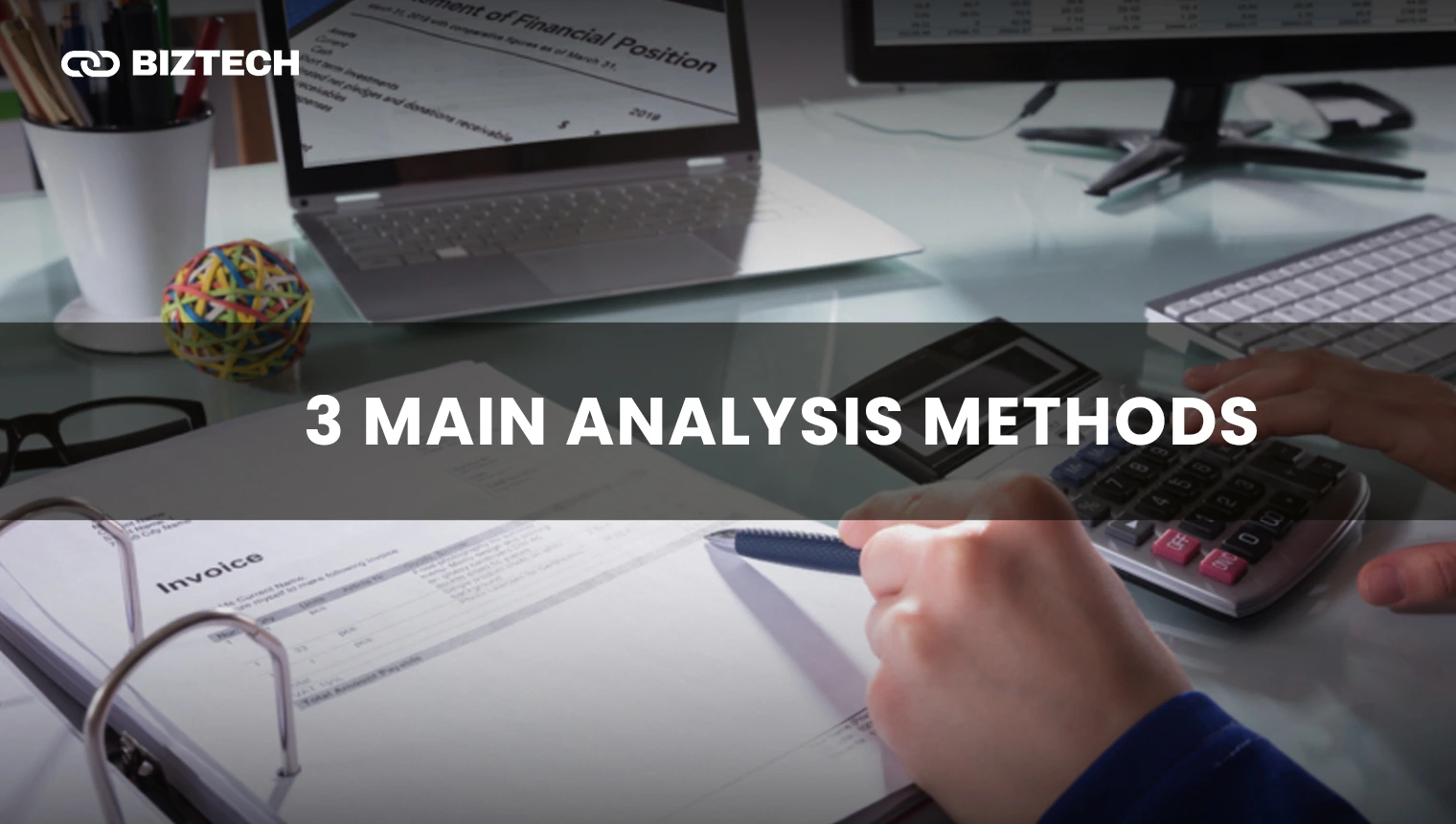Yes, you can definitely stare at your computer screen and figure out the complicated graph of the stock market all day long. However, one more legitimate way to make a well-informed investment decision is to analyse a company’s financial position.
To do so, we must delve into the fundamentals of comprehending a company’s financial position.
Table of Contents
What is it?
A critical component of the financial analysis process depends on meticulously examining its assets, liabilities, and equity components. This assessment is more than just a computation; it encompasses understanding the ins and outs of the financial position statement.
This complex procedure, known as financial statement analysis, entails comprehending crucial statements of financial position, which provides insights into the company’s financial position, performance, and trends.
The financial position statement, a thorough composition, is intended to provide crucial information to stakeholders. Whether computing ratios to estimate a company’s value or comparing market and book values to determine stock pricing, the precise information about its position situation gives a full picture of where it stands in the financial environment.
Analyzing a company’s financial position entails examining its financial statements and ratios to understand its financial health. This approach is analogous to listing assets and liabilities, as when borrowing from a bank to measure financial strength.
The statement of financial position can be reflected in three major pieces, famously known as balance sheet, income and cash flow statements.
Its Importance to Both The Company and Investors
The detailed analysis of a company’s financial position is crucial for two parties:
For the Company
The financial position statement enables strategic planning and decision-making by providing insights into the company’s short- and long-term responsibilities. The corporation can optimize liquidity, manage liabilities, and plan for growth by assessing current and non-current assets and liabilities.
For Investors
Analyzing a company’s financial position is critical for investors when determining its value. Investors can measure stock prices and make informed investment decisions by comparing financial ratios to competitors and industry norms.
The split of assets, liabilities, and shareholder ownership on the balance sheet allows investors to analyze the company’s health and market value. Tools such as the market-to-book multiple assist in determining how the market sees the company’s financial position, influencing purchasing and selling decisions.
The study of a company’s financial position, as represented by its financial position statement or balance sheet, is a critical component of corporate management and investment decision-making.
Before Doing a Financial Position Analysis
Before examining a company’s financial position, various considerations and processes must be followed to create a solid and meaningful understanding of the organization’s financial standing.
A sole focus on the company’s stocks is not holistic enough; an acute assessment of the industry in which the company operates is also pivotal. To begin, it is critical to determine the economic characteristics of the business, which can involve an analysis utilizing methods such as Porter’s Five Forces to understand the value chain within the company’s industry.
Nothing gives you more insight into a company than thoroughly understanding the company’s concrete strategies to achieve a certain goal. Recognising and comprehending the company’s strategies is critical. The company’s distinctiveness, profit margins, brand loyalty, and operational variables will all impact the company’s overall financial status.
As shown, the process before performing a financial position analysis is multifaceted to assess the company’s financial position comprehensively. It requires careful consideration of the industry context and company strategy.
Now that you know about preliminary analysis, it’s time to get into the nuts and bolts of financial analysis. This includes analyzing financial statement quality, specific financial statements such as income, balance, and cash flow.
First, I will introduce you to the three main pillars of financial statements.
Types of Financial Statements
The balance sheet, income statement, and cash flow statement are used by businesses to manage their operations and provide transparency to their stakeholders. A company needs to engage with all three to produce a more comprehensive perspective on a company’s actions and performance.
Balance Sheet
The balance sheet, also known as the statement of financial position, is an important document that details a company’s assets, liabilities, and equity at a given point in time. This statement is critical to understanding the company’s financial position since it provides insight into its ability to meet obligations and distribute to shareholders.
Before conducting a financial position analysis, it is critical to understand the different components of a balance sheet and what they represent in terms of the company’s financial health.
Current and noncurrent assets are separated, with current assets such as cash, receivables, and inventories expected to be converted into cash within a year. Non-current assets such as property, plant, and equipment (PPE) and intangible assets are utilized across fiscal periods.
Like assets, liabilities are also classified as current and non-current. Current liabilities, such as accounts payable and short-term loans, have a one-year maturity. Loans, notes, and bonds are normally accounted for at amortized cost and are classified as non-current liabilities.
After removing liabilities from assets, you will have equity, which shows residual ownership, including contributed capital, retained earnings, and non-controlling interest.
The balance sheet helps various stakeholders make decisions by providing information about the company’s financial situation. The analysis of balance sheet components such as assets, liabilities, and equity over time aids in evaluating the company’s short-term and long-term responsibilities and liquidity.
Income Statement
An income statement, commonly known as a profit and loss (P&L) statement, is a critical document summarizing a company’s revenues, expenditures, and expenses during a given period. This assists in discovering financial trends and provides crucial insights into profitability, expenditure, and operational efficiency.
Understanding the company’s financial position begins with understanding the components of the income statement. Revenues, cost of goods sold (COGS), gross profit, operating profits, income before taxes, net income, and other indicators such as earnings per share (EPS) and EBITDA are all included.
For example, vertical and horizontal analysis approaches (which I will get into later) are critical for analyzing relative proportions, trends, and changes over reporting periods.
A thorough grasp of the income statement is required before analyzing the financial position statement.
Besides, along with the other 2 financial statements, it provides a comprehensive insight into the company’s operational results. It aids firms and investors in developing plans, creating goals, and making educated decisions.
Furthermore, the income statement assesses profitability and the company’s ability to profit from its expenditures. It aids in measuring a company’s financial health and is critical in performance tracking, future spending, and budget planning.
Cash Flow Statement
The Cash Flow Statement consists of three main sections: operating, investing, and financing activities. Analyzing these sections allows one to assess the company’s liquidity, solvency, and overall financial health.
Operating cash flow: This section reflects accrual-based income components such as receivables and payables, and it aids in understanding the cash generated by fundamental company activities. It is a key indicator of the company’s ability to create positive cash flow, which is required to meet regular financial obligations.
Investing cash flow: This includes capital expenditures and asset sales, which reflect the company’s investment decisions. A detailed examination can identify strategic investments or divestments that impact the company’s financial position statement.
Financing cash flow: This section discusses debt and equity transactions and the company’s finance strategy, such as dividends, stock transactions, and debt-related actions. It aids in understanding the capital structure of the organization and how it affects the overall financial position.
Positive operating cash flow suggests healthy, sustainable operations and prospective expansion, but negative flow can indicate financial trouble. Meanwhile, negative investing cash flow may signify growth investments, which are only sometimes undesirable.
The cash flow statement must be thoroughly examined to determine the company’s cash capacity, investment potential, and financial responsibilities. It facilitates the examination of the company’s financial status, assessing the ability to satisfy obligations, fund expansion, and identify concerns.
3 Main Analysis Methods
Analyzing a company’s financial position necessitates a thorough analysis of its financial documents, specifically the balance sheet, income statement, and cash flow statement. This examination assists in comprehending the company’s financial performance and overall health.
Three main analysis methods can be used: horizontal analysis, vertical analysis, and ratio analysis, which will be explored further below.
These three analytical tools work together to fully assess a company’s worth, revenue vs expenses, and cash flow, revealing the complexities of the financial position statement.
Using these methodologies, internal and external stakeholders can understand the company’s financial health, efficiency, and value and undertake comparative assessments across time, resulting in more informed decision-making.
Horizontal Analysis
Horizontal analysis assesses a company’s financial position over multiple time periods. It compares historical financial data across several timelines, absolute or percentage, to identify trends and growth patterns in the company’s financial position statement.
It begins with collecting data from certain accounting periods, selecting comparison methods such as percentages or absolute comparisons, and finally, identifying patterns.
For example, by comparing previous years’ amounts to base year data, substantial patterns can be discovered, particularly in categories like cost of goods sold, profit margins, and return on equity. This method can highlight directional changes in account balances over time, which can help to comprehend the company’s progress in Year over Year (YoY) or Quarter over Quarter (QoQ) comparisons.
It is also useful for evaluating a company’s growth, financial condition compared to competitors, operational strengths and shortcomings, and liquidity. It can be used to track changes in key indicators like inventory turnover and profit margin, and it is critical for comparing cross-industry growth and profitability.
In practice, such an analysis method helps make educated management decisions, forecast future trends, and benchmark against competitors. It provides a full view of the company’s financial position by enabling performance trend analyses and detailed insights, particularly in sales or acquisitions.
Vertical Analysis
Vertical analysis is a way of assessing a company’s financial position, which is critical for comprehending the statement of financial position.
Vertical analysis, as opposed to horizontal analysis, compares financial data over different periods by expressing each financial statement item as a percentage of a base figure inside the statement, such as total sales for the income statement or total assets for the balance sheet.
This method is used for various financial statements, such as income, balance, and cash flow. It explains the relationship between the various components of these statements and the company’s bottom line. It facilitates comparison between organizations and sectors by displaying relative account balance proportions by presenting each line item as a percentage of a base amount.
The vertical analysis calculates percentages using the formula: Individual Item / Base Amount * 100.
This method improves comparability by analyzing relative proportions, such as income statement items as a percentage of gross sales or balance sheet items as a percentage of total assets. The approach is useful for understanding net profit, working capital movements, and the structural composition of components like costs, expenses, assets, and liabilities.
Ratio Analysis
Ratio analysis is vital for evaluating a company’s financial position by analyzing financial documents, specifically the balance sheet (or statement of financial position), income statement, and cash flow statement. This method delves deep into the numbers, computing the relationships between all three financial documents to give a big picture.
There are many ratios you can derive from all three financial statements. Some of the examples include activity ratios, liquidity ratios, solvency ratios, profitability ratios, etc.
Calculating ratios might seem simple, but deriving their true meaning demands benchmarking. It’s common practice for analysts to match a firm’s ratios with past data, sector standards, or rivals’ metrics to extract genuine interpretations.
Moreover, it suffers from certain limitations. Its effectiveness is entirely dependent on the accuracy of all three financial statements. While it may be a great tool to gauge the company’s current or past performance, it does not guarantee its future financial trajectory.
Although such is the case, ratio analysis has stood the test of time. Many analysts still heavily rely on this method to analyze a company’s financial position.
Key Ratios to Analyze a Company’s Financial Position
Analyzing a company’s financial status is critical for making sound investment and commercial decisions. The key ratios produced from the statement of financial condition are useful in assessing the company’s financial position.
Let’s look at some of the most important ratios.
Liquidity Ratios
Liquidity ratios are crucial financial indicators to evaluate a company’s ability to meet short-term obligations.
The statement of financial status, which provides a snapshot of the company’s assets, liabilities, and equity as of a specific date, is used to calculate these ratios. You can gauge a company’s financial stability using liquidity ratios. These include the current ratio and the quick ratio.
Current Ratio
The current ratio is one of the primary liquidity ratios used to gauge a company’s capacity to satisfy its short-term obligations or debts. It calculates the link between a company’s current assets and liabilities by dividing them by current liabilities.
A positive position is indicated by a current ratio greater than 1.0, which shows that the company can pay its short-term obligations because it has more current assets than liabilities. If the ratio is less than 1.0, it may be difficult to pay off short-term loans, which could signify financial danger. A ratio of 1.0, on the other hand, shows complete coverage.
Quick Ratio (Acid-Test)
Unlike the current ratio, the quick ratio, or the Acid-Test Ratio, focuses on the most liquid assets by subtracting inventories from current assets and dividing them by current liabilities. This more rigorous evaluation indicates a company’s ability to pay short-term loans without relying on inventories or less liquid assets.
The Quick Ratio’s relevance stems from its emphasis on quickly available assets such as cash, equivalents, and accounts receivable. It gives a more cautious and exact indicator of a company’s capacity to satisfy short-term liabilities using highly liquid assets without significant value loss by omitting inventories and prepaid expenses. This is especially important for companies with large inventory turnover or receivables.
A Quick Ratio of 1:1 or more is favorable, indicating adequate liquid assets to satisfy short-term liabilities. However, industry differences and specialized needs can cause this standard to shift.
A low quick ratio may indicate difficulties in meeting obligations, raising concerns about solvency, whereas a high ratio may show financial soundness and robust liquidity without reliance on inventories.
Solvency Ratios
Solvency Ratios are important financial measurements used to assess a company’s capacity to meet long-term obligations and remain solvent over time.
The debt-to-equity ratio and interest coverage ratio are among the ratios. These measures are useful in estimating the risk connected with the company’s debt structure and analyzing its financial stability.
Debt to Equity Ratio
The Debt-to-Equity (D/E) Ratio is a crucial part of the category of solvency ratios. It is essential in assessing a company’s capacity to meet long-term obligations and offers insight into its general financial health.
The D/E ratio, in essence, gauges the proportion of a company’s debt to its equity, assisting in identifying the reliance on debt for funding operations. In this context, higher ratios indicate heightened risk, particularly regarding the company’s debt coverage by equity upon liquidation.
In the context of solvency ratios, the D/E ratio provides a distinct perspective from liquidity ratios. While liquidity ratios focus on immediate commitments and asset conversion speed, solvency measures like the D/E ratio are concerned with long-term financial stability and debt coverage.
A larger debt-to-equity ratio may indicate greater financial leverage, which may have an impact on credit rating and costs. Favorable solvency measures with limited debt reliance suggest a strong financial position and long-term health.
Interest Coverage Ratio
One of the solvency factors used to assess a company’s capacity to meet its long-term debt obligations is the interest coverage ratio. This ratio assesses a company’s financial health and default risk by analyzing its capacity to pay interest on its debt.
To calculate the Interest coverage ratio, you can compare the company’s EBIT (Earning Before factoring in the Interest and Taxes) to its interest expenses. A larger ratio, often greater than 1.5, implies stronger payment capabilities, whereas a ratio less than 1.5 indicates probable difficulty in fulfilling interest payments.
The ratio is useful for gaining insight into a company’s financial position and capacity to manage debt effectively. Variations such as EBITDA (excluding depreciation) and EBIAT (after taxes) may be included for correct analysis, representing diverse perspectives on interest affordability.
Furthermore, industry changes may impact the ratio’s applicability; for example, utility firms may find a ratio of 2 acceptable, whereas more volatile industries, such as manufacturing, may demand 3 or more. Comparing ratios across industries and considering profit stability and demand can lead to more accurate assessments of a company’s statement of financial position.
Profitability Ratios
Profitability ratios are important financial indicators that evaluate a company’s capacity to create earnings about revenue, operational costs, balance sheet assets, or shareholders’ equity across certain time periods.
As they demonstrate how well a corporation translates sales into profits and returns on investments for shareholders, these ratios are essential for examining a company’s financial status.
Net margin, return on equity (ROE), and return on assets (ROA) are the three types of profitability ratios.
Net Margin
Net margin is an important financial indicator that indicates a company’s capacity to transform sales into net profits. It assesses a company’s ability to convert sales into profit by considering all operational variables such as revenue, additional income, costs, interest, and one-time payments.
Net margin is calculated by removing the cost of goods sold (COGS), costs, interest, and taxes from revenue and dividing the result by revenue to get a percentage. For example, a 10% net margin means the company profits $0.10 for every $1 in revenue. This statistic is important in financial analysis since it provides information on management’s success in creating profits from sales and controlling costs.
Furthermore, net margin supports firm assessment and pricing strategies by allowing comparisons to industry averages and across sectors. However, it is vital to note that different industries may have varied profit margins, demanding a thorough analysis when comparing net margins among organizations.
Misinterpretation of ratios and cash flows can also lead to limitations, as a low net margin does not always imply poor performance, and a high margin only sometimes implies high cash flows.
Return on Equity (ROE)
Return on Equity (ROE) is a fundamental financial term that assesses a company’s capacity to create profits from its shareholders’ equity.
A ratio assesses a company’s profitability by assessing how well it leverages shareholders’ equity to generate net income. The ROE is commonly represented as a percentage computed by dividing net income by shareholders’ equity.
ROE is used for various objectives, including determining a company’s annual return on equity investments, tracking management performance, and creating industry-based comparisons. A growing ROE may suggest good reinvestment decisions and show a company’s financial health and growth.
Monitoring ROE is critical for organizations and investors since it helps them evaluate profitability, equity efficiency, and investment returns.
Return on Assets (ROA)
Return on Assets (ROA) is a critical financial indicator that measures a company’s profitability concerning its assets.
Expressed as a percentage, ROA considers net income and average assets to determine how efficiently assets are used to generate profits. A greater ROA implies that assets are being used efficiently, whereas a lower one indicates space for improvement.
In the context of profitability ratios, ROA is a simple yet useful technique for determining the efficiency with which investments are converted into net income. ROA is calculated by dividing net income by total assets, either average or end-of-period assets.
In contrast to Return on Equity (ROE), Return on Assets (ROA) allows for debt in its calculation, making it more complete in measuring how resources, including liabilities, are utilized. As debt grows, ROE may outperform ROA.
The importance of ROA also rests in making organizations comparable within the same industry or monitoring changes over time. This is critical since asset utilization varies by industry, and a decent ROA might vary by sector, with more than 5% being regarded as good and more than 20% deemed exceptional.
Market-to-book Multiple: Tool for Investors
There is one more analysis tool used by many erudite investors who spend years studying how to invest in stocks: market-to-book multiple
The market-to-book multiple is an important instrument investors use to compare a company’s current market value to its book value, revealing how the market evaluates its stocks.
The current stock price of existing shares determines the market value, whereas the book value indicates the residual assets if the firm were to be liquidated. As it is calculated by deducting liabilities, preferred stock, and intangible assets from total assets, it is directly related to the statement of financial status.
The ratio or market-to-book multiple measures a stock’s valuation concerning its financial position. A ratio of less than one indicates that the stock is undervalued and may indicate investing opportunity. A ratio greater than one, on the other hand, denotes overvaluation and expresses investor confidence in the company’s growth but may also signal anxiety because of overvaluation.
Investors can use the market-to-book ratio to compare a company’s stock price to its book value.
By comparing this to the statement of financial position, investors can draw well-informed judgements about the company’s financial situation, whether the stock is overvalued or undervalued, and how it compares to competitors in the same industry.
Conclusion
The difficult but essential process of analyzing a company’s financial status depends on a methodical approach to determining the company’s overall financial health.
The analysis begins with identifying industry features and corporate strategies and thoroughly evaluating financial statement quality. Analyzing current profitability and risk using key ratios and creating projected financial statements results in an appropriate valuation of the organization, whether using discounted cash flow or relative valuation approaches.
To preserve trust in the data, paying close attention to spotting any accounting inconsistencies or fraudulent reporting is necessary. Comparative analysis, both over time and against competitors, deepens comprehension of the financial position.
Finally, the financial analysis of a company provides critical information for investors, managers, and other stakeholders, assisting in informed decision-making, resource allocation, and investment plans.





